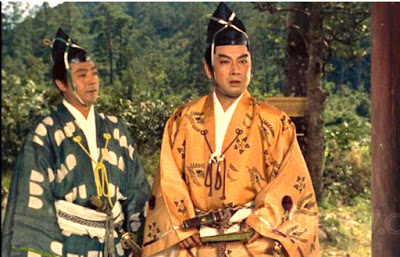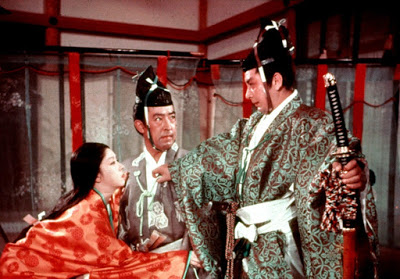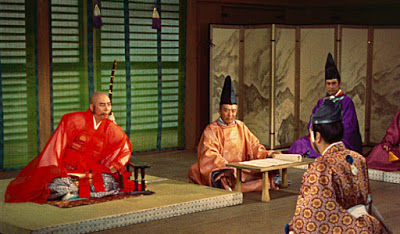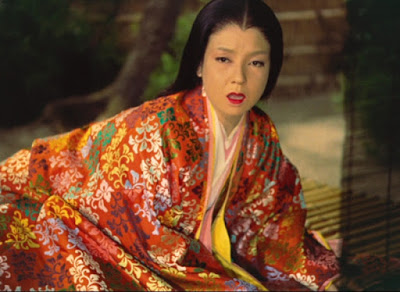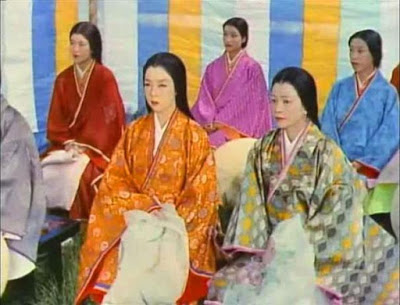Gate of Hell
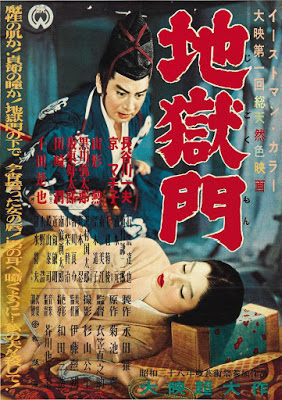
Director: Teinosuke Kinugasa
Year: 1953
Rating: 9.0
I was just
dazzled visually by this period drama from Teinosuke Kinugasa. We live surrounded
by colors - most of them muted whites, browns and blacks - and it is only
in film sometimes when we realize how astonishingly powerful colors can be
- how they can jump out and captivate us with their richness. Make your eyeballs
come alive and make you wonder why we don't surround ourselves with colors
that speak to us. This film drowns in luxurious kimonos both for the men
and women and offset against simplistic interior designs they are stunning.
This is a gorgeous film with wonderful period detail, ceremony and ritual.
It is interesting to see the arc of Teinosuke Kinugasa filming style.
